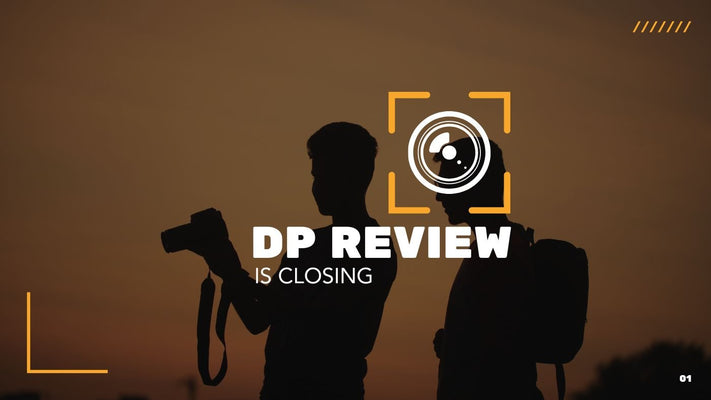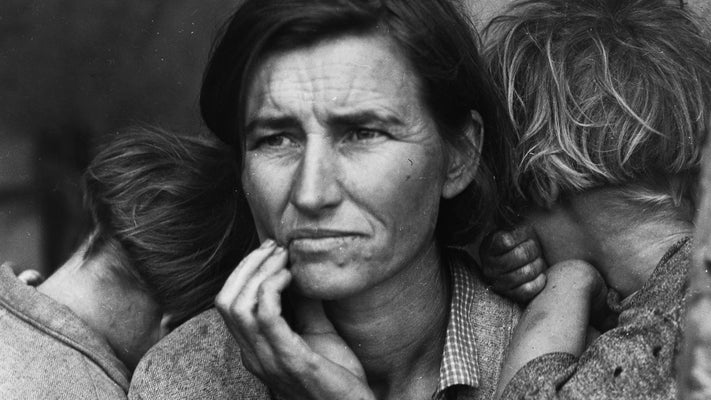Street Photography Laws
Street photography, an enchanting genre, presents the power to turn ordinary moments into extraordinary depictions of life. This art form emerged in the early 20th century when portable cameras became more accessible, enabling photographers to document everyday life and society in real time. While the term might suggest images captured on city streets, it encompasses much more, encapsulating many public places and situations. From bustling city sidewalks to quiet rural parks, any publicly accessible space is a potential canvas for a street photographer.
The essence of street photography lies in its spontaneity and quest for authenticity. It thrives on candid moments, unposed and unscripted, offering raw glimpses into human nature, social interactions, and the rhythm of daily life. A great street photograph tells a story or evokes an emotion, serving as a visual time capsule that reflects the cultural and social landscape of a particular place and time.
Yet, street photography is more than just capturing compelling images. It's a dance between the photographer and the world around them, demanding keen observation, swift reactions, and often a degree of empathy towards the subjects. It's about witnessing and recording slices of life as they unfold, freezing fleeting moments into timeless frames. Understanding this is the first step in street photography's exciting and rewarding journey.
I have been doing street photography for thirty years. Yet many photographers are still terrified of the prospect of walking up to individuals and taking their photographs. I was once on a simple photography tour, and the tour operator, a professional photographer watching me approach my subjects and take their pictures, exclaimed, "You're my hero!" confessing his fears regarding photographing people and places. Still, others think they are somehow breaking the laws and that some notion of the right to privacy in public protects people.
In this article, I cover the ethics and laws of street photography.
Navigating Legal Aspects of Street Photography: An Educational Guide
Understanding and respecting the law is as crucial to street photography as honing your technical skills and artistic eye. So let's delve into an enlightening exploration of the legal aspects of street photography.
Public Space – Where Your Camera is Free
Public spaces are considered an open game for photographers. You are generally permitted to photograph anything or anyone in public, which includes streets, parks, and other publicly accessible areas. From the Eiffel Tower to the local street musician, they're fair game as long as they are in public. Remember, though, privacy and decency laws still apply, and respect for your subjects should always come first.
Privacy Rights – A Balancing Act
The tricky part comes when you deal with individuals' privacy rights. While in public spaces, people generally have a reduced expectation of privacy. Still, that doesn't mean you can invade or photograph their personal space in compromising or inappropriate situations. Striking a balance between capturing a candid moment and respecting privacy rights is a delicate art in street photography.

Property Rights – Be Aware and Respectful
Images captured in public can generally be used for personal or artistic purposes without legal issues. However, using them commercially is a different ballgame. You need the subject's permission for commercial use, often in the form of a signed model release. Even public figures or landmarks can have restrictions regarding commercial use.
You also need to consider property rights. If someone's private property is visible in your photo, you may need their consent, especially for commercial purposes. Some buildings and landmarks may also have restrictions against Photography due to copyright laws. Researching local regulations is essential before pointing your camera lens at a piece of architecture.
For example, photos of the Eifel Tower are allowed during the day for personal or commercial work, but the lights on the tower at night are copyright protected. You can use or display them publicly or online without written authorization for personal work - like fine art photographs - but using them in commercial work is prohibited. But taking pictures of the famous landmark or any people in front of it is NOT illegal. Here is a link to known image restrictions from commercial usage by the photo stock agency Shutterstock

Legal Implications – Be Informed
Remember, laws vary from country to country and even state to state. What's legal in New York may not be permissible in London. Legal ignorance can result in penalties or lawsuits, so it's critical to understand the laws in your specific location.
Practical Tips – How to Tread Safely
As a street photographer, it's essential to stay informed and respectful. For example, if someone asks you to stop photographing them, it's generally a good idea to comply. Similarly, seek permission if you need clarification about photographing a particular location or person. Not only is it polite, but it can also save you from potential legal issues.
Street photography is an exciting and rewarding genre that thrives on spontaneity and a keen eye for detail. However, it's essential to consider the legal ramifications of your work. So, as you embark on your journey in street photography, remember to consider these legal considerations. Your dedication to understanding and respecting these rules will make you a better, more responsible photographer. Happy shooting!

Understanding the Concept of 'Reasonable Expectation of Privacy
In Photography, one should understand that a 'reasonable expectation of privacy' extends to all scenarios, even when individuals are in public places. For instance, someone sitting inside a restaurant may be visible from the street, but they could expect privacy while dining. Nevertheless, a long lens capturing them might constitute an invasion of privacy, even if the photo was taken from a public space.

Children and Vulnerable Individuals
Special consideration should be given while photographing children or vulnerable individuals. Legal concerns aside, it's a question of ethics and respect. Some jurisdictions have stricter regulations concerning photographing minors, so always be aware of these and exercise the utmost care.
Terrorism and Security Laws
Post 9/11, many countries have imposed strict laws around photographing certain types of infrastructure and buildings due to concerns about terrorism. This includes train stations, bridges, airports, military installations, and more. Always heed signs prohibiting Photography and respect the directives of law enforcement officers or security personnel.
The Role of Social Media
The advent of social media has added a new dimension to the field of street photography. Publishing a photograph online can expose you to broader legal considerations. With the global nature of social media, a picture taken and published in one country could violate laws in another where it's viewed.
Dealing with Confrontations
Despite being within your rights to photograph in public, confrontations can occur. In such scenarios, staying calm, being polite, and articulating your rights are essential. However, remember that de-escalating the situation should always be the priority.
The exciting world of street photography marries art and real-life uniquely and intriguingly. But it's crucial to remember that your freedom as a photographer must be tempered with respect for privacy and awareness of local laws. This balance will help you avoid legal complications and earn you respect and appreciation from the public and your peers in the street photography community. So, armed with your camera and this knowledge, you are now ready to venture out and capture the world, one shot at a time!

The Role of Consent
In many instances, capturing someone's photo in public doesn't legally require consent. But if a person clearly states they don't wish to be photographed, it's respectful and wise to abide by their wishes. Obtaining explicit consent can make for a smoother photography experience. This is particularly important if you intend to exhibit or sell your work.
Image Manipulation and Defamation
Photographers must be careful when editing and manipulating photos, as it can lead to legal issues if it defames or misrepresents the subject. For instance, altering the image to depict the person in an embarrassing or harmful situation can lead to accusations of defamation, even if the original photograph was taken legally.
Sensitive Locations
Apart from government and military installations, some locations, such as religious sites, traditional or cultural spaces, and even some public events, may have their own rules about Photography. Remember these rules and always respect local customs and traditions when photographing. For example, when my wife and I were in Istanbul, Turkey, I wanted to photograph inside the Blue Mosque and Hagia Sophia. I sought clarification and was informed that Photography is allowed, but do not take pictures of people in the mosque to pray. When photographing people, I sought permission and was often allowed to photograph.

The general rule of thumb in the United States is that it's legal to photograph anything or anyone without seeking permission, as long as you're situated in a public place. Of course, this rule has specific exceptions, but they are few and far between. Regrettably, many law enforcement and security personnel hold contrary beliefs and may hassle you for practicing street photography. Unfortunately, it's an issue that many photographers face in the country. For further understanding and to ensure you're well-equipped to handle such situations, it's worth familiarizing yourself with local laws and regulations.
Navigating Between Public and Private Spaces
The line between public and private property often blurs as we stroll down city streets or quaint neighborhoods. But as street photographers, we must keep an eye on these boundaries and recognize the spaces that may technically fall under private ownership. For instance, have you ever wondered about the status of your local shopping mall? It's easy to overlook because, for most people, it doesn't matter. However, street photographers can be asked to stop taking pictures in such places.
Signs may be displayed in these areas, explicitly stating a ban on Photography. You might question the rationale behind such a restriction and likely receive vague responses like 'data protection' or 'privacy.' But the underlying reason is less vital than the fact that private property owners have the prerogative to set their rules. As responsible photographers, we must respect these guidelines or face the potential consequences.
Typically, the repercussions aren't too severe – often, you might just be asked to stop your photography activities by a vigilant security officer. However, many photographers consider the risk worth the unique perspectives such locations can offer. If confronted, I nod in agreement and continue to the following site.
Unanticipated Private Spaces: A Cautionary Note for Street Photography
Surprisingly, some areas that seem public are privately owned spaces, potentially leading unsuspecting photographers into legal issues. For example, the exterior spaces of many buildings, including certain pavements or areas marked by metallic studs, may be part of the private property. Especially in densely built-up cities, the line between public and private spaces can often be deceptively unclear.
As street photographers, understanding these intricacies is essential to avoid crossing any legal boundaries and preserve the harmony between our art and our environment. So stay mindful and respectful, and capture the world from your perspective.

Rights and Responsibilities
In your journey as a street photographer, it's crucial to remember that your right to capture public life is intertwined with your responsibility to respect the rights of others. While your goal might be to capture authentic, raw moments of humanity, it should never come at the expense of someone's privacy or dignity.
Street photography offers a fantastic opportunity to observe and record life's spontaneity and diversity. By respecting individuals' privacy, understanding local laws, and maintaining a responsible approach, you ensure your growth as a photographer and contribute to a respectful culture in the street photography community.
So, as you venture into the streets with your camera, remember to capture not just with your lens but also with your heart. Let your photography bridge understanding and respect between you and your subjects. So, here's to your street photography journey – may it be filled with enlightening encounters and remarkable frames!
















